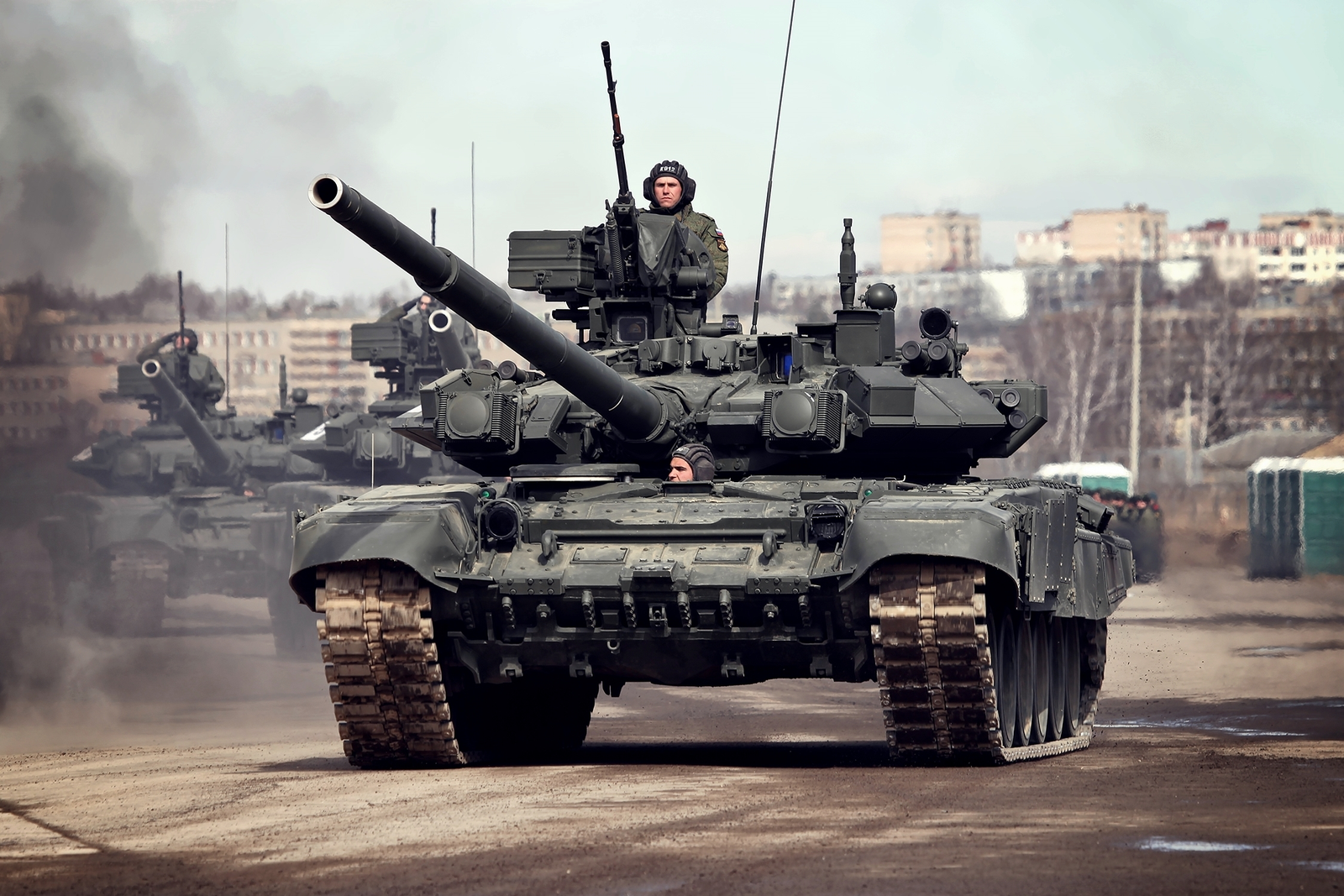
In the world of modern armored warfare, few comparisons draw as much attention as Russia’s T-90 versus America’s M1 Abrams. These machines are far more than metal and firepower—they reflect entirely different philosophies about how to fight on the battlefield. While spec sheets can be impressive, real-world engagements often reveal the true strengths and weaknesses of each design.

The T-90 is designed for mobility, efficiency, and quick deployment in large quantities. An evolution from the previous T-72, it has a 125mm smoothbore cannon, autoloading that permits a crew of three, and defensive features like the Shtora-1 system, intended to confuse approaching missiles. Its explosive reactive armor, Kontakt-5, can bounce older anti-tank ammunition, although new high-penetration rounds represent a valid threat. With its lower profile and lighter hull, the T-90 can move through terrain that would bog down heavier tanks, but this comes at a price, trading some protection and survivability.

Western designs have a different approach. The M1 Abrams and Europe’s Leopard 2 prioritize heavy armor, crew protection, and raw firepower. The Abrams’ composite armor has depleted uranium layers, and its 120mm smoothbore gun is complemented by sophisticated fire control systems to provide accurate targeting, even under adverse conditions. A gas turbine engine provides speed and mobility, though at the cost of heavy fuel consumption. Its four-man crew allows redundancy and ensures maintenance, loading, and situational awareness can be easily taken care of, a comparison to the T-90’s autoloader system.

Crew protection highlights a significant point of variation. Western tanks are engineered to keep crews alive even if the tank is hit, with blowout panels and armored ammo compartments turning explosions away from people. The T-90 continues to use the Soviet-pattern carousel for ammo storage within the turret, which, when penetrated, can create devastating “jack-in-the-box” explosions, offering little opportunity for survival for the crew.

Each of these tanks has strengths in combat. The T-90 is capable of firing guided missiles at ranges of five kilometers, which is a valuable asset in some cases. Yet the Abrams’ pairing of high-powered armament, advanced ammunition, thermal imaging, and precise targeting has consistently provided it with an advantage in high-intensity combat.

This has proven true time and again. In Syria, the T-90 had early success against legacy missile systems, but the conflict in Ukraine laid bare weaknesses. Ukrainian troops took advantage of its thin turret roof and exposed ammunition through top-attack missiles and drones and knocked out multiple vehicles. Its low reverse speed also restricted retreat maneuvers when ambushed.

The Abrams, on the other hand, has decades of combat-tested performance in battles like the Gulf War, Iraq, and Afghanistan. M1 tanks destroyed Iraqi T-72s during the 1991 Gulf War, demonstrating the synergy of armor and firepower. Losses have been mainly due to mines or improvised explosives and not direct tank-to-tank combat. Ongoing upgrades, such as increased armor, active protection, and enhanced sensors, have kept it in use on current battlefields.

Russia’s tank troops also confront wider issues beyond the T-90. The age-old T-72 continues in common use but is afflicted with the same weaknesses, including ill-shielded ammunition, ancient optics, and reduced armor. Although it’s most numerous, it has turned into one of the most destroyed war tanks in history.

Tank design is ongoing. Western armies are increasingly using modular armor and advanced active defense systems, whereas Russian designs retain a reliance on reactive armor, which is effective in some cases but underwhelming against tandem warheads and top-attack weapons. The T-14 Armata is a future-generation design with an unmanned turret and improved crew protection, but production is minimal, and it has not yet been tested in live combat.

Ahead on the horizon are new designs. The U.S. Army’s future M1A3 Abrams will be lighter, more fuel-efficient, and potentially feature an autoloader or unmanned turret. Europe’s MGCS program and Britain’s Challenger 3 effort are pushing forward armor, sensors, and networked battlefield technology.

In the end, no tank is unstoppable. Contemporary battlefields are saturated with precision-guided missiles, loitering drones, and low-cost but lethal anti-tank systems. Choices decades ago regarding ammunition placement, crew survivability, and armor design now directly relate to making it through. The T-90’s struggles in Ukraine are a harsh reminder that technology, protection, and crew survivability in tank combat are not extras—instead, they are key to success and survival.
